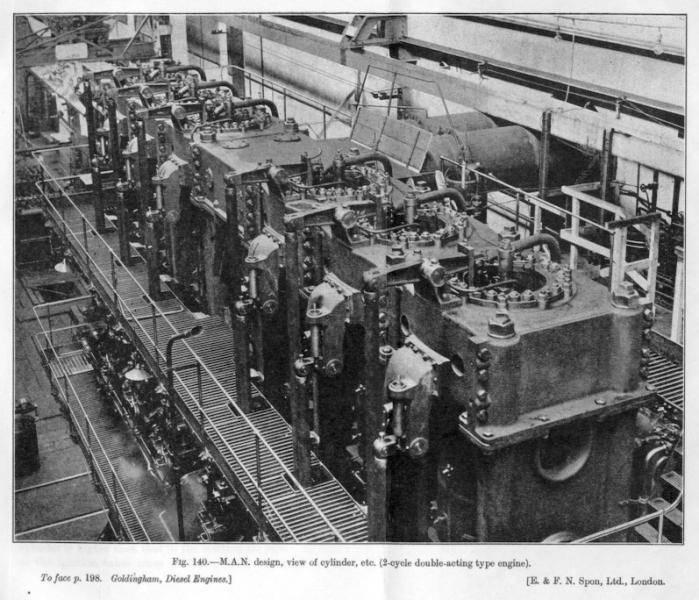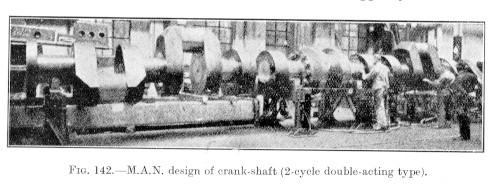Big Diesel Engines
Today, a new breed of Diesel engines fights an old metaphor. The University of Houston's College of Engineering presents this series about the machines that make our civilization run, and the people whose ingenuity created them.
The thermal efficiency of a power plant is a measure that reaches right into your pocketbook. When a power plant burns, say, coal or oil, thermal efficiency is the fraction of chemical energy in the fuel that reaches the electric generator.
A big coal-fired steam power plant does well to reach forty percent efficiency. A lot more capital expense will buy fancy combined cycles with efficiencies as high as fifty percent. For years that's been as good as we get, and then only in huge plants producing hundreds of megawatts. Your automobile can reach only 20 or 25 percent efficiency, and then only under optimal conditions.
Now that 50 percent barrier is finally being broken by an unexpected contender: Today, huge 68-MW Diesel engines are reaching efficiencies over fifty percent. You can buy a single engine big enough to serve 40,000 households. Yet Diesels came into being as early variants on the lightweight internal combustion engine.
We should've seen great size coming long ago. As early as twenty years after Rudolf Diesel's patent in 1892, 3000 to 4000-horsepower Diesels were appearing in small ships. But steam kept providing the high power needed for fast-moving warships and liners.
So we overlooked how well suited Diesel engines were to playing the large, slow-moving, high-efficiency role of the stationary power plant. We used both gasoline and Diesel engines to change transportation. Diesel engines began by displacing steam on smaller steamships. Then they replaced the old steam locomotives. The automobile industry has also used Diesel engines now and then. Maybe you're one of the few who drive a Diesel-powered car today.
Diesel himself built his first engines at Germany's Maschinenfabrik Augsburg-Nürnberg (or MAN). Today the same company (now MAN B&W) makes the biggest of these new engines. One of their twelve-cylinder plants is 80 feet long, and it stands 46 feet tall. It weighs over two thousand tons, and its great crankshaft turns at 100 rpm. Your car engine, turning at 3000 rpm, is like a wasp beside that elephant.
When internal combustion appeared over a century ago, it shaped a new metaphor of lightness and speed. It revolutionized transportation. It made powered flight feasible and gave birth to automobiles and motorcycles. I once built model airplanes powered by both gas and Diesel engines that weighed scant ounces.
Internal combustion parted ways with the big steam power plants that began electrifying cities in the 1880s. That's why these huge new Diesel power plants are a surprise. They're not radical, but they violate the metaphor of lightness which internal combustion claimed at the outset. Once any metaphor takes root, it's almost impossible to escape. But these new monsters are escaping it. They're tiptoeing back across a metaphorical line that's separated them from major power production for a century.
I'm John Lienhard, at the University of Houston, where we're interested in the way inventive minds work.
(Theme music)
I am grateful to colleagues in the UH Mechanical Engineering Department for their counsel, in particular to N. Shamsundar, who suggested the topic. I also owe especial thanks to retired engineer Edward S. S. Morrison for correcting a draft of the episode.
Goldingham, A.H., Diesel Engines, London: Spon & Chamberlin, 1927

For a full-size picture click the thumbnail
From Diesel Engines, 1927
A MAN 4400-HP, two-stroke Diesel engine viewed from above.
This huge engine delivered only one fifteenth the power of today's really big Diesels

From Diesel Engines, 1927